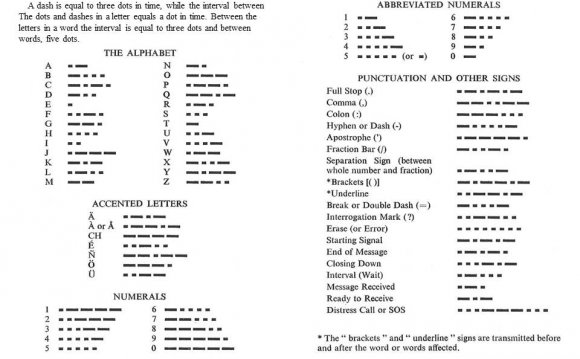
The most significant changes are the elimination of the APC requirement and the reduction of power limit to 10 watts.
The reader is advised to consult the most current version of Part 97 rules prior to operation.
Report Order WT 97-12
Modified the Rules for Amateur Radio Spread Spectrum
Amendment of the Amateur Service Rules to Provide For Greater Use of Spread Spectrum Communication Technologies
Past Rules on Spread Spectrum Operations under Part 97
The Rules and Regulations that govern the Amateur Radio Service come from Title 47 Part 97 of the Code of Federal Regulations. These are excerpts from Part 97 of the Rules and Regulations that relate to Spread Spectrum emissions in the Amateur Radio Service.Sec. 97.119 Station identification.
(5) By a CW or phone emission during SS emission transmission on a narrow bandwidth frequency segment. Alternatively, by the changing of one or more parameters of the emission so that a conventional CW or phone emission receiver can be used to determine the station call sign.
Spread Spectrum is permitted on the following bands (over the entire band unless otherwise indicated):
UHF: 70 cm (420-450 MHz), 33 cm (902-928 MHz), 23 cm (1240-1300 MHz), 13 cm (2300-2310 and 2390-2450 MHz*)
SHF: 9 cm (3.3-3.5 GHz), 5 cm (5.650-5.925 GHz), 3 cm (10.00-10.50 GHz), 1.2 cm (24.00-24.25 GHz)
EHF: 6 mm (47.0-47.2 GHz), 4 mm (75.5-81.0 GHz), 2.5 mm (119.98-120.02 GHz), 2 mm (142-149 GHz), 1mm (241-250 GHz), Above 300 GHz
Operation on all of the above bands are on a secondary basis. No amateur station transmitting in these bands shall cause harmful interference to, nor is protected from interference due to the operation of the primary service.
(*Note: Recent rule making has allocated 2390-2400 MHz and 2402-2400 MHz to the Amateur community on a primary basis.)
(a) SS emission transmissions by an amateur station are authorized only for communications between points within areas where the amateur service is regulated by the FCC. SS emission transmissions must not be used for the purpose of obscuring the meaning of any communication.
(b) Stations transmitting SS emission must not cause harmful interference to stations employing other authorized emissions, and must accept all interference caused by stations employing other authorized emissions. For the purposes of this paragraph, unintended triggering of carrier operated repeaters is not considered to be harmful interference.
(c) Only the following types of SS emission transmissions are authorized (hybrid SS emissions transmissions involving both spreading techniques are prohibited):
(1) Frequency hopping where the carrier of the transmitted signal is modulated with unciphered information and changes frequency at fixed intervals under the direction of a high speed code sequence.(2) Direct sequence where the information is modulo-2 added to a high speed code sequence. The combined information and code are then used to modulate the RF carrier. The high speed code sequence dominates the modulation function, and is the direct cause of the wide spreading of the transmitted signal.(d) The only spreading sequences that are authorized are from the output of one binary linear feedback shift register (which may be implemented in hardware or software).
(1) Only the following sets of connections may be used:Number of stages Taps used in in shift register feedback 7 7, 1 13 13, 4, 3, and 1 19 19, 5, 2, and 1 (2) The shift register must not be reset other than by its feedback during an individual transmission. The shift register output sequence must be used without alteration. (3) The output of the last stage of the binary linear feedback shift register must be used as follows:(i) For frequency hopping transmissions using x frequencies, n consecutive bits from the shift register must be used to select the next frequency from a list of frequencies sorted in ascending order. Each consecutive frequency must be selected by a consecutive block of n bits. (Where n is the smallest integer greater than log (2) x.)(ii) For direct sequence transmissions using m-ary modulation, consecutive blocks of log (2) m bits from the shift register must be used to select the transmitted signal during each interval.
(e) The station records must document all SS emission transmissions and must be retained for a period of 1 year following the last entry. The station records must include sufficient information to enable the FCC, using the information contained therein, to demodulate all transmissions. The station records must contain at least the following:
(1) A technical description of the transmitted signal;(2) Pertinent parameters describing the transmitted signal including the frequency or frequencies of operation and, where applicable, the chip rate, the code rate, the spreading function, the transmission protocol(s) including the method of achieving synchronization, and the modulation type;(3) A general description of the type of information being conveyed, (voice, text, memory dump, facsimile, television, etc.);(4) The method and, if applicable, the frequency or frequencies used for station identification; and(5) The date of beginning and the date of ending use of each type of transmitted signal.(f) When deemed necessary by an EIC to assure compliance with this part, a station licensee must:
(1) Cease SS emission transmissions;(2) Restrict SS emission transmissions to the extent instructed;and(3) Maintain a record, convertible to the original information (voice, text, image, etc.) of all spread spectrum communications transmitted. (g) The transmitter power must not exceed 100 W.








